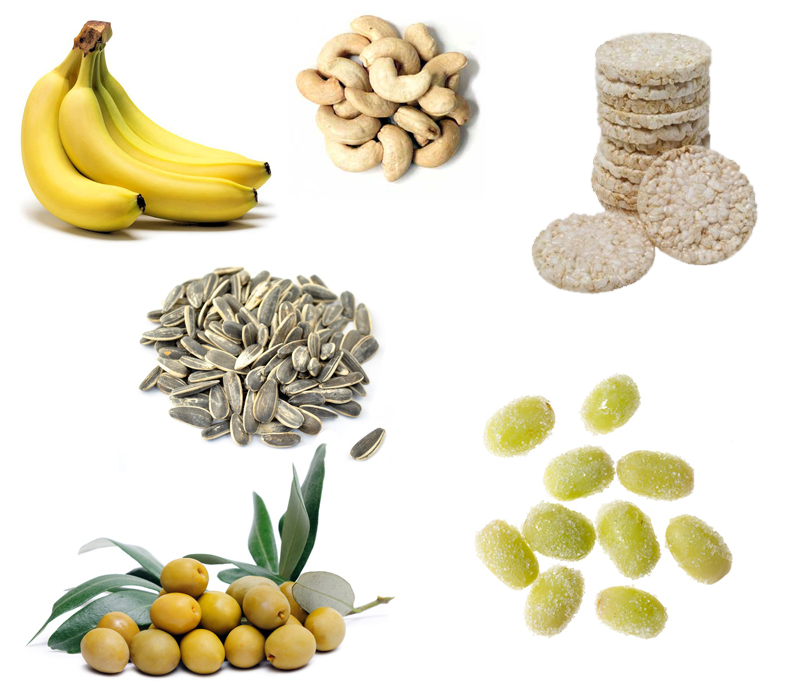A truly healthy diet
 time: 21:31:40
time: 21:31:40 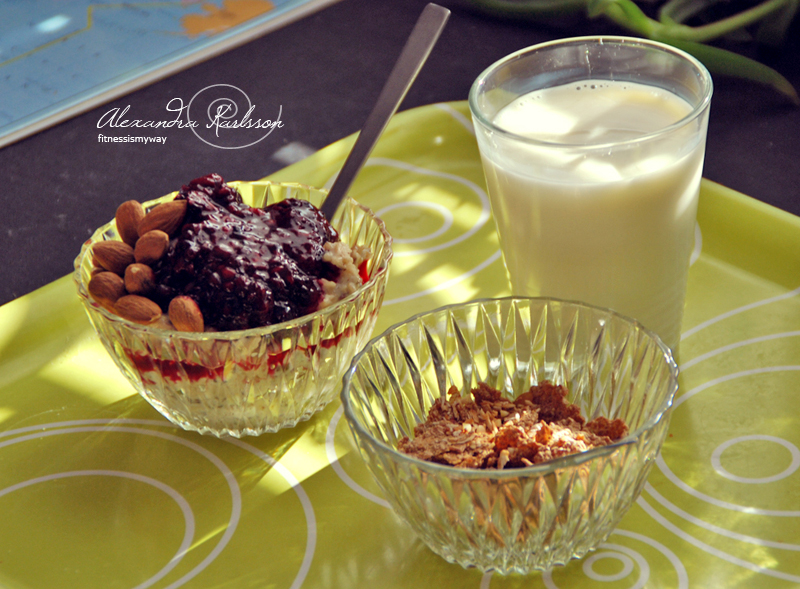
- doesn't exclude foods
- is made up of foods, not numbers
- is varied and flexible
- is not restrictive
- allows you to trust your body
- is not obsessive
- doesn't use food as a reward or punishment
- doesn't have to be "perfect"
- allows you to live your life, but it is not your life
- does not exclude any food group
- consists of foods that make you feel energized and healthy
Why skipping meals, fasting or restricting is a really bad idea:
 time: 14:58:00
time: 14:58:00 - It only takes 4 - 6 hours for your body to enter into starvation mode. In this mode your metabolism slows down making you less efficient at burning calories. Your body will protect the fat on your body in order to keep you warm and will instead start burning up your muscles for energy - including your heart.
- Your brain uses glucose it gets from food to work properly. You get fuzzy headed after not eating for a few hours because your brain can’t store the glucose and the glucose from your latest meal has been used up. You may notice you start getting shaky, tired, very hungry, unable to concentrate, a pounding heart, nausea, headaches and a whole host of other unpleasant symptoms. All of which are resolved by eating something.
- Your heart and kidney tissues alone need 200 calories a day for each pound they weigh (your heart weighs approximately half a pound, one kidney weighs around 0.37 pounds). Your brain requires around 109 calories per pound a day to function and your liver needs 91 per pound (your brain weighs around 3.8 lbs, your liver about the same). On top of this, your muscles need 6 calories per pound at rest - that’s without even getting out of bed. This means that your body needs on average 700 - 1000 calories per day JUST to keep you alive.
- Food is nutrition and your body needs a certain amount of nutrition to work properly. So not enough food = not enough nutrition. That means drying hair and skin, weakened nails, osteoporosis, constipation, insomnia, coldness, poor circulation, stopped periods. We make the mistake in today’s society of thinking food is bad. It’s not. We’ve forgotten in the mania to be thin that food is actually the thing which keeps us alive.
- One final point. Weight lost quickly will initially be water weight and the weight of the food in your body. That’s why people lose a lot of weight in the first week of a diet - it’s got nothing to do with losing fat. Weight lost quickly is weight gained back again quickly. Crash diets and fasts don’t work in the long run, it really is that simple.
on my phone so no Swedish translation
Super-Low Carb Or Intermittent Fasting?
 time: 16:24:00
time: 16:24:00 - Carbohydrates: 10 percent or less of calories
- Protein: 25 percent of calories
- Fat: 65 percent of calories
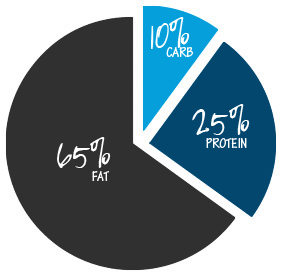

The easy meal plan guide
 time: 11:01:00
time: 11:01:00 

Healthy snack ideas
 time: 21:02:00
time: 21:02:00 Abs?
 time: 19:15:34
time: 19:15:34  Eat clean in a caloric deficit
Eat clean in a caloric deficit Cut out simple carbs, junk food, sodas, condiments and sugary/processed foods
Cut out simple carbs, junk food, sodas, condiments and sugary/processed foods Control blood sugar by eating small meals every few hours
Control blood sugar by eating small meals every few hours Consume lean protein at each meal
Consume lean protein at each meal Incorporate some HIIT (high intensive interval training) a few times a week
Incorporate some HIIT (high intensive interval training) a few times a week Drink plenty of water
Drink plenty of water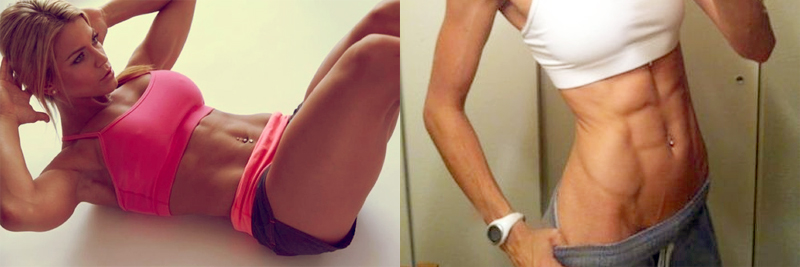
 Äta rent med ett underskott av kalorier
Äta rent med ett underskott av kalorier Plocka bort snabba kolhydrater, skräpmat, läsk, såser och livsmedel som innehåller socker/är bearbetade från ditt intag
Plocka bort snabba kolhydrater, skräpmat, läsk, såser och livsmedel som innehåller socker/är bearbetade från ditt intag Håll blodsockernivån under kontroll genom att äta små måltider med ett par timmars mellanrum
Håll blodsockernivån under kontroll genom att äta små måltider med ett par timmars mellanrum Få i dig magert protein vid varje måltid
Få i dig magert protein vid varje måltid Träna HIIT (högintensiv intervallträning) några gånger i veckan
Träna HIIT (högintensiv intervallträning) några gånger i veckan Drick mängder med vatten
Drick mängder med vattenA perfect week of eating {pictures from garden-of-vegan}
 time: 19:25:15
time: 19:25:15 
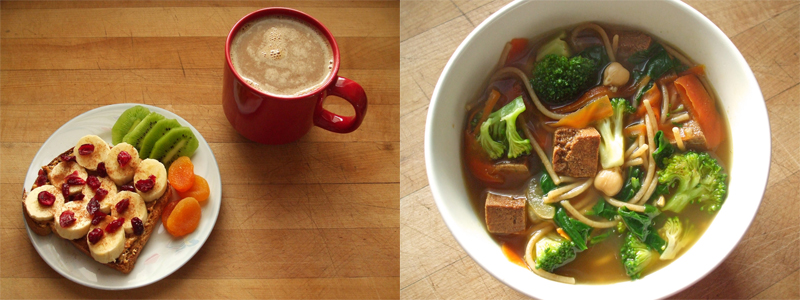



Vi har alla sagt det förr - "detta är måndagen då jag ändrar min kost". När allt kommer omkring så erbjuder ju början av veckan ett oskrivet blad och en chans att bryta spiralen av dåliga vanor. Men vi måste inse att det är väldigt enkelt att råka svänga av på vägen mot sunda matvanor, eller hur? Så här har ni en simpel plan som förhoppningsvis hjälper till att hålla dig på rätt spår, oavsett situationen du befinner dig i.


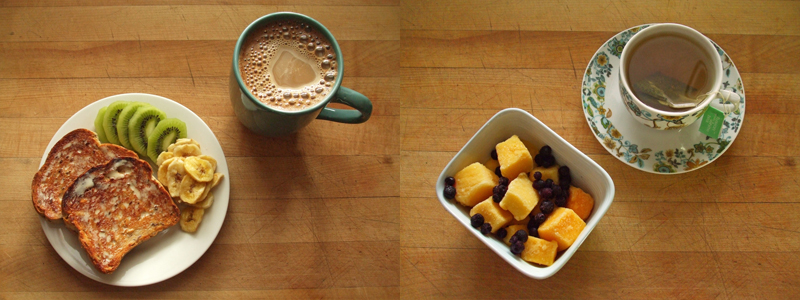

Why You Overeat
 time: 20:18:15
time: 20:18:15 
What you can do:
1. When you snack, stick to clean snacks such as a handful of nuts or fresh fruit with a dollop of natural peanut butter.
2. Reduce your intake of saturated fats. Opt for low-fat dairy products and lean cuts of beef. The less palmitic acid you consume, the less chance it has of preventing fat-fighting hormones from doing their job.
3. When a recipe calls for any oil or fat, opt for extra virgin olive oil, which contains oleic acid, one of the other fats studied by researchers from UT Southwestern Medical Center. Oleic acid allows your brain to signal you to stop eating.
4. Keep track. Logging what you eat is a useful step when leading a healthy clean-eating lifestyle. You could be ingesting more palmitic acid than you realize. Knowing what you’re eating will keep you mindful and allow you to make better choices down the line.
24 Meat-Free Recipe Substitutions
 time: 22:13:00
time: 22:13:00 


 TOFU
TOFU SEITAN
SEITAN TEMPEH
TEMPEH OKARA
OKARA QUINOA
QUINOA GARBANZO BEANS (ALSO KNOWN AS CHICKPEAS)
GARBANZO BEANS (ALSO KNOWN AS CHICKPEAS) BLACK BEANS
BLACK BEANS BLACK-EYED PEAS
BLACK-EYED PEAS SOYBEANS
SOYBEANS SPLIT PEAS
SPLIT PEAS LENTILS
LENTILS PEANUTS
PEANUTS WALNUTS
WALNUTS ALMONDS
ALMONDS CASHEWS
CASHEWS PUMPKIN
PUMPKIN MUSHROOMS
MUSHROOMS EGGPLANT
EGGPLANT ZUCCHINI
ZUCCHINI SQUASH
SQUASH POTATOES
POTATOES TEXTURED VEGETABLE PROTEIN
TEXTURED VEGETABLE PROTEIN EGGS
EGGS CHEESE
CHEESE7 Good Foods to Improve Moods
 time: 12:15:42
time: 12:15:42 50 easy 3-ingredient breakfasts
 time: 14:30:00
time: 14:30:00 1. Steel-cut oatmeal, low-fat plain yogurt, ground flaxseed
2. Eggs, diced tomatoes and mushrooms
3. Broiled grapefruit with honey and cinnamon
4. Grilled salmon and asparagus with a poached egg on top
5. Whole-grain waffles with berries and a drizzle of maple syrup
6. Yogurt (your choice of flavor and type), fruit (mix and match with the yogurt flavor) and granola or cereal (again, any of your favorites will do)
7. Avocado, mango and Greek yogurt, pureed in a blender
8. A whole-wheat English muffin, one egg and a MorningStar maple-flavored vegetarian sausage patty
9. Steel-cut oatmeal, shredded zucchini and crumbled goat cheese
10. Plain Greek yogurt, fresh blueberries and a drizzle of real maple syrup
11. Cooked oatmeal, 1 tbsp of peanut butter, 1 sliced banana
12. Whole-wheat English muffin with egg and tomato
13. Sautéed spinach and onions sprinkled with cheese
14. Cottage cheese, cucumber and rice cakes
15. Carb Balance flour tortilla, scrambled egg and smoked salmon
16. Half a cup of black beans, half a cup of a sweet onion and 2/3 cup frozen corn sautéed together into a hash
17. Eggs scambled with 1 roma tomato & fresh spinach
18. Wheat toast, peanut butter and sliced bananas
19. Trader Joe's organic High Fiber O's, fresh blueberries and skim milk
20. Whole-wheat sourdough toast topped with smoked salmon and Greek yogurt
21. 1 cup homemade yogurt, 1 organic banana and 1/2 cup fresh organic blueberries blended into a smoothie
22. Freezer pancakes (pancakes you made over the weekend, frozen, then reheated in the microwave - that counts as one ingredient, right?) topped with frozen berries warmed in the microwave and a little butter
23. Chopped fresh baby spinach and diced red peppers sauteed in olive oil and scrambled with eggs
24. Corn tortilla scrambled together with one egg and fresh salsa
25. Quinoa with pears and vanilla
26. Honey-roasted peanut butter spread on a banana and rolled in coconut
27. Sauté chopped chard until almost wilted, make a hole in the center, crack an egg into the hole and cook. Serve with a slice of whole-wheat toast.
28. Almond butter, whole-wheat toast and raisins
29. A packet of oatmeal, one container of light yogurt and one piece of whatever fruit strikes my fancy for the day!
30. A small serving of last night's leftovers, a piece of in-season fruit and a small glass of milk
31. Black rye bread with slices of a salted avocado
32. Take one whole egg (and one egg white) and scramble with a fork in a cereal bowl. Chop one wedge of light Laughing Cow cheese and scatter it over the egg. Top with 1/4 cup fresh salsa, and then microwave until desired consistency is reached.
33. Traditional oats (uncooked), almond milk and chia seeds.
34. Chopped cantaloupe or melon, mint and plain yogurt
35. Whole-wheat waffle, natural peanut butter, sliced bananas
36. Greek yogurt, cubed Granny Smith apple, freshly toasted sliced almonds
37. Grits with soy cheese and a poached egg
38. Protein pancakes with almond butter and banana
39. Chia pudding (vanilla almond milk & chia seeds) with fresh blueberries
40. Kashi cereal, Silk soymilk and fresh fruit
41. Toasted sprouted-grain English muffin, scrambled Egg Beaters and low-fat cheese
42. Plain yogurt, granola, agave nectar.
43. Fresh fruit, whole-wheat toast and two eggs
44. Eggs, oatmeal and fruit
45. 1/2 of a Fiber One English muffin, 1/2 cup low-fat cottage cheese and a peach
46. Greek yogurt, fresh berries & Stevia smoothie
47. Whole-wheat flax waffle, Greek yogurt, fresh-picked raspberries
48. 9-grain toasted baguette topped, tomato slice and egg
49. 1/2 cup scrambled Egg Beaters, a slice of soy cheese and almond milk
50. Summer vegetable hash with poached eggs and toasted nori
Or, wait…is it 30% exercise and 70% diet?
 time: 14:25:44
time: 14:25:44 We hear it all the time - 20% exercise, 80% diet. Or, wait…is it 30% exercise and 70% diet? Aren’t abs made in the kitchen, but you won’t get definition without some heavy liftin’? It’s not that these sayings are untrue so much as they’re misleading. No worries, I’m here to clear this up for you.
There is no mathematical way to break down whether exercise or diet is more important for your goals. If you want to run a marathon, changing your diet isn’t going to help you with endurance. Exercise, specifically running, will. This goes the same for any goal - gaining muscle isn’t achieved by just increasing protein consumption, it’s gained by exercise. Sure, the two go hand in hand, but is it really as simple as an 80/20 or 70/30 ratio?
So what are these numbers trying to tell us? If you’re falling short on your goals - fitness or weight loss - you need to look at your diet. If you don’t appropriately fuel your body you’re not going to get anything out of it. Additionally, if you’re trying to lose weight, falling into the “exercise your pizza away” trap will lead to a vicious cycle. Exercise should never be a compensatory tool for any meal you just ate.
The truth of the matter is that diet is very important, and much easier to tailor than exercise for weight loss. If you want to lose weight, you must create a caloric deficit (you can read about this here). Creating a calorific deficit by switching out high calorie foods with low nutrient density for low calorie foods with high nutrient density (see: trading pizza for chicken breast) is much easier and takes all of 1 minute. If you wanted to burn those calories off, you’re committing yourself to miles of running or hours at the gym. It’s easier to rein in your diet and make small changes here and there than to spend surplus time at the gym to “make up” for a bad diet.
Additionally, people tend to underestimate what they eat and overestimate what they burn. The science behind burning calories is not exact. The science behind the caloric content of your food an estimate. Watching your portions is easier, and more effective, then plugging away on the treadmill for 4 hours every morning.
Diet is important because your body requires fuel to function. It also takes less time to swap out high calorie for low calorie than exercising “off” excess calories.
Exercise is important because without challenging your body, you’ll never see results. Lifting weights, running, swimming, etc. is how you increase muscle mass, strength, endurance or cardiovascular healthy. Diet alone cannot do that.
It’s not x% vs. x% - it’s a good balance between fueling your body and making it work hard.
Guide To: Paleo Foods
 time: 20:21:16
time: 20:21:16  beef
beef  bison
bison  boar
boar  buffalo
buffalo  chicken
chicken  duck
duck  eggs
eggs  game meats
game meats  goat
goat  goose
goose  lamb
lamb  mutton
mutton  ostrich
ostrich  pork
pork  quail
quail  rabbit
rabbit  squab
squab  turkey
turkey  veal
veal  venison
venison  catfish
catfish  carp
carp  clams
clams  grouper
grouper  halibut
halibut  herring
herring  lobster
lobster  mackerel
mackerel  mahi mahi
mahi mahi  mussels
mussels  oysters
oysters  salmon
salmon  sardines
sardines  scallops
scallops  shrimp
shrimp  prawns
prawns  snails
snails  snapper
snapper  swordfish
swordfish  trout
trout  tuna
tuna 
 artichokes
artichokes  asparagus
asparagus  arugula
arugula  bamboo shoots
bamboo shoots  beets
beets  bok choy
bok choy  broccoli
broccoli  brussels sprouts
brussels sprouts  cabbage
cabbage  carrots
carrots  cassava
cassava  cauliflower
cauliflower  celery
celery  chard
chard  collard greens
collard greens  cucumbers
cucumbers  daikon
daikon  dandelion greens
dandelion greens  eggplant
eggplant  endive
endive  fennel
fennel  garlic
garlic  green beans
green beans  green onions
green onions  jicama
jicama  kale
kale  kohlrabi
kohlrabi  leeks
leeks  lettuce
lettuce  lotus roots
lotus roots  mushrooms
mushrooms  mustard greens
mustard greens  okra
okra  onions
onions  parsley
parsley  parsnips
parsnips  peppers
peppers  purslane
purslane  radicchio
radicchio  radishes
radishes  rapini
rapini  rutabagas
rutabagas  seaweed
seaweed  shallots
shallots  snap peas
snap peas  spinach
spinach  squash
squash  sugar snaps
sugar snaps  sunchokes
sunchokes  sweet potatoes
sweet potatoes  taro
taro  tomatillos
tomatillos  tomato
tomato  turnip greens
turnip greens  turnips
turnips  watercress
watercress  yams
yams  yuccas
yuccas 
 apples
apples  apricots
apricots  avocados
avocados  bananas
bananas  blackberries
blackberries  blueberries
blueberries  cherries
cherries  cranberries
cranberries  figs
figs  grapefruit
grapefruit  grapes
grapes  guavas
guavas  kiwis
kiwis  lemons
lemons  limes
limes  lychees
lychees  mangoes
mangoes  melons
melons  nectarines
nectarines  oranges
oranges  papayas
papayas  passionfruit
passionfruit  peaches
peaches  pears
pears  persimmons
persimmons  pineapples
pineapples  plantains
plantains  plums
plums  pomegranates
pomegranates  raspberries
raspberries  rhubarb
rhubarb  star fruit
star fruit  strawberries
strawberries  tangerines
tangerines  watermelon
watermelon 
 anise
anise  annatto
annatto  basil
basil  bay leaf
bay leaf  caraway
caraway  cardamom
cardamom  carob
carob  cayenne pepper
cayenne pepper  celery seed
celery seed  chervil
chervil  chicory
chicory  chili pepper
chili pepper  chipotle powder
chipotle powder  chives
chives  cilantro
cilantro  cinnamon
cinnamon  clove
clove  coriander
coriander  cumin
cumin  curry
curry  dill
dill  fennel
fennel  fenugreek
fenugreek  galangal
galangal  garlic
garlic  ginger
ginger  horseradish
horseradish  juniper berry
juniper berry  kaffir lime leaves
kaffir lime leaves  lavender
lavender  lemongrass
lemongrass  lemon verbena
lemon verbena  licorice
licorice  mace
mace  marjoram
marjoram  mint
mint  mustard
mustard  oregano
oregano  paprika
paprika  parsley
parsley  pepper, black
pepper, black  peppermint
peppermint  rosemary
rosemary  saffron
saffron  spearmint
spearmint  star anise
star anise  tarragon
tarragon  thyme
thyme  turmeric
turmeric  vanilla
vanilla  wasabi
wasabi  za'atar
za'atar 
 avocado oil
avocado oil  bacon fat/lard
bacon fat/lard  butter
butter  coconut milk
coconut milk  coconut oil
coconut oil  duck fat
duck fat  ghee
ghee  macadamia oil
macadamia oil  olive oil
olive oil  palm oil
palm oil  schmaltz
schmaltz  sesame oil
sesame oil  suet
suet  tallow
tallow  walnut oil
walnut oil 
 almonds
almonds  brazil nuts
brazil nuts  chestnuts
chestnuts  hazelnuts
hazelnuts  macadamia
macadamia  pecans
pecans  pine nuts
pine nuts  pistachios
pistachios  pumpkin seeds
pumpkin seeds  sesame seeds
sesame seeds  sunflower seeds
sunflower seeds  walnuts
walnuts 
 almond milk, fresh
almond milk, fresh  coconut milk
coconut milk  coconut water
coconut water  herbal tea
herbal tea  mineral water
mineral water  water
water 
How to stop sugar cravings
 time: 00:12:00
time: 00:12:00 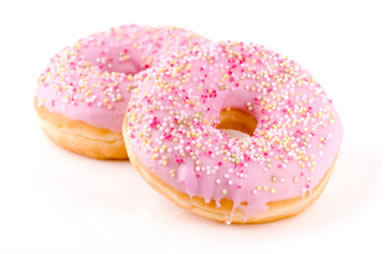
 Try to find a substitute. Generally, people tend to crave sweets after a meal or as a pick-me-up in the late afternoon. It might be helpful to have something else there and ready to fight off those cravings. For example, peppermint tea might work in the evening, a box of raisins in the afternoon, a piece of fruit, or anything else that you can think of that would be somewhat nutritious and easy to keep with you. If you must have something "sweet", go with something that's naturally sweet, such as dried fruit or even 100% fruit juice.
Try to find a substitute. Generally, people tend to crave sweets after a meal or as a pick-me-up in the late afternoon. It might be helpful to have something else there and ready to fight off those cravings. For example, peppermint tea might work in the evening, a box of raisins in the afternoon, a piece of fruit, or anything else that you can think of that would be somewhat nutritious and easy to keep with you. If you must have something "sweet", go with something that's naturally sweet, such as dried fruit or even 100% fruit juice. Wait out the craving. Most nutrition experts say that the cravings you experience will only last a couple of minutes. So if you can wait it out, they will pass and you will be better for it. Try to occupy yourself for a good 10 minutes when you get a craving. Call a friend, take a short walk or do something to distract yourself.
Wait out the craving. Most nutrition experts say that the cravings you experience will only last a couple of minutes. So if you can wait it out, they will pass and you will be better for it. Try to occupy yourself for a good 10 minutes when you get a craving. Call a friend, take a short walk or do something to distract yourself. Set daily goals and reward yourself for meeting them. To a sugar addict, nothing is tougher than getting through the day without a sugary treat. The longer you can hold out, the easier it will become, so try to find a reward that would be worth holding out for. I did this about a year ago and gave myself a dollar for every day that I did not indulge in sweets, and at the end of the month, I would go get a manicure or buy myself something nice.
Set daily goals and reward yourself for meeting them. To a sugar addict, nothing is tougher than getting through the day without a sugary treat. The longer you can hold out, the easier it will become, so try to find a reward that would be worth holding out for. I did this about a year ago and gave myself a dollar for every day that I did not indulge in sweets, and at the end of the month, I would go get a manicure or buy myself something nice. Recruit someone to do it with you. If you are married or have a family, this would be a healthy habit for everyone to adopt. Clean out the cupboards and refrigerator of unhealthy foods and tempting treats. Make it a team effort. Hold each other accountable and support one another through the tough times.
Recruit someone to do it with you. If you are married or have a family, this would be a healthy habit for everyone to adopt. Clean out the cupboards and refrigerator of unhealthy foods and tempting treats. Make it a team effort. Hold each other accountable and support one another through the tough times. Put yourself in good situations. If you are the one who loves to use the vending machines at work or will drive through the local gas station to fill up on snacks, then try to do things in a new way to prevent yourself from falling into old habits. Clean out all of the change and single dollar bills in your wallet so you aren't able to feed the vending machine. Make sure you fill up on gas when someone is with you. Go grocery shopping after a meal, so you don’t load up on unhealthy foods.
Put yourself in good situations. If you are the one who loves to use the vending machines at work or will drive through the local gas station to fill up on snacks, then try to do things in a new way to prevent yourself from falling into old habits. Clean out all of the change and single dollar bills in your wallet so you aren't able to feed the vending machine. Make sure you fill up on gas when someone is with you. Go grocery shopping after a meal, so you don’t load up on unhealthy foods.What to eat after a workout
 time: 23:44:51
time: 23:44:51 - Oatmeal with skim milk and a banana
- Toast with cottage cheese and jam

- Chicken breast with broccoli
- Egg white omelet with salsa

- Protein shake with fruit
- Sweet popatoe with greek yogurt
You're now stocked on veggies and fruits but... how long will they last?
 time: 12:53:20
time: 12:53:20 - Artichokes
- Asparagus
- Bananas
- Basil
- Broccoli
- Cherries
- Corn
- Dill
- Green beans
- Mushrooms
- Strawberries
- Aragula
- Avocados
- Cucumbers
- Eggplant
- Grapes
- Lettuce
- Limes
- Pineapple
- Zucchini
- Apricots
- Blueberries
- Brussels sprouts
- Cauliflower
- Grapefruit
- Leeks
- Lemons
- Oranges
- Oregano
- Parsley
- Peaches
- Pears
- Peppers
- Plums
- Spinach
- Tomatoes
- Watermelon
- Apples
- Beets
- Cabbage
- Carrots
- Celery
- Garlic
- Hard squash
- Onions
- Potatoes



What is "clean eating"?
 time: 00:11:29
time: 00:11:29 - Start making your own meals from wholesome lean proteins, veggies, fruit and healthy fats. Basically, eat as close to natural as possible!
- Remember healthy food does not have to be expensive.
- Toss (or donate if you're so inclined) and avoid buying the following: soda, diet soda, fruit juice, sports drinks, cookies, chips, crackers, candy, ice cream, pudding, jell-o, flavored yogurt, condiments like mayo, ketchup, ranch and other fattening/sugary dressings and marinades, deli meats, processed meats, white breads and pastas, sugary cereals, packaged processed crap, granola bars. Most are full of sugar and processed, chemical junk! Sugar spikes insulin and promotes fat storage and has been linked to numerous, serious health conditions such as obesity, heart disease and some types of cancer.
- Recipe possibilites are virtually endless and there is no need for healthy food to be boring. Use popular search engines like Google to look for "clean eating" recipes.
- Start slow. Try swapping out one meal a day that is typically unhealthy. So for example if you usually grab a doughnut or pastry for breakfast, try making a healthier breakfast with eggs and old-fashioned oatmeal with cinnamon and stevia! It only takes 5 minutes to make and will give you tons of healthy nutrients and energy to tide you over for several hours! Each day, aim to make your choices healthier. In time it will become a habit!
Nutrition Scares
 time: 20:56:25
time: 20:56:25 
My tips for "getting abs"
 time: 16:43:35
time: 16:43:35 - Eat clean (NO JUNK FOOD, choose wholesome, natural sources)
- Do cardio (HIIT is great for fat loss)
- Lift weights (Revs metabolism, and increases calorie burn over an extended period of time)
- Drink water (Your body needs water to perform basic functions like mobilize fat stores and build muscle)

- Get enough sleep (If you don't sleep enough, cortisol levels are raised, which promotes fat storage around the abdomen)
- Avoid stress (Same cortisol problem)
- Eat healthy fats (Fats like avocado, olive oil, natural peanut butter and almonds help you LOSE fat)
- Eat lean proteins (It helps keep you satiated longer and has the highest thermogenic effect of any other macronutrient)



